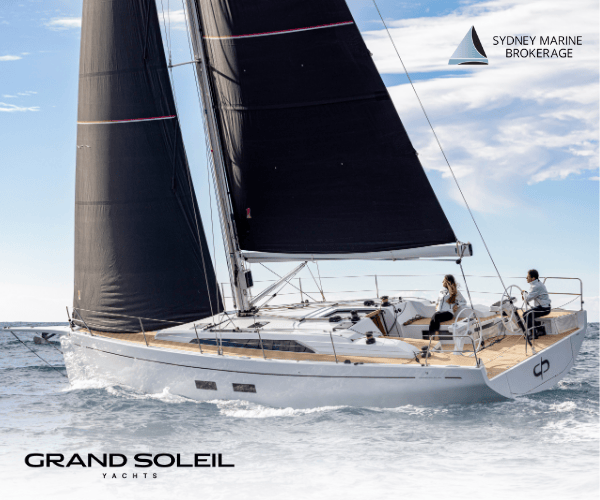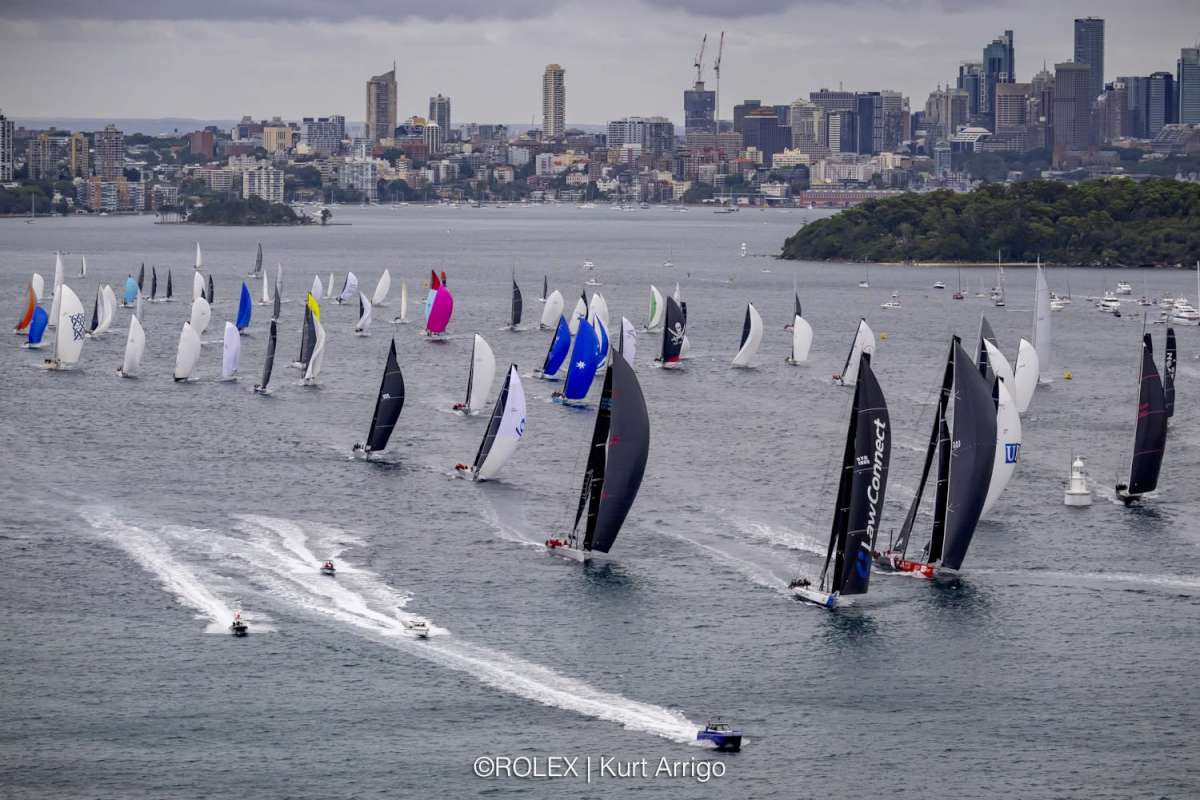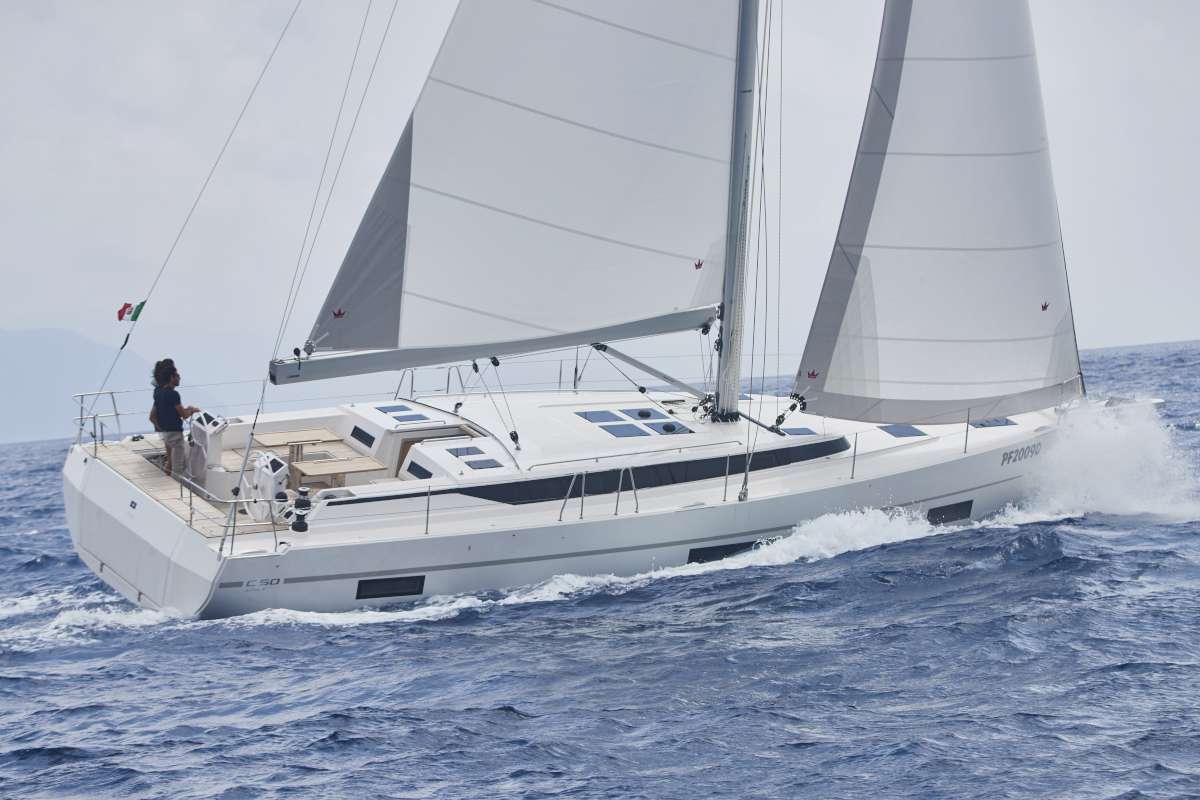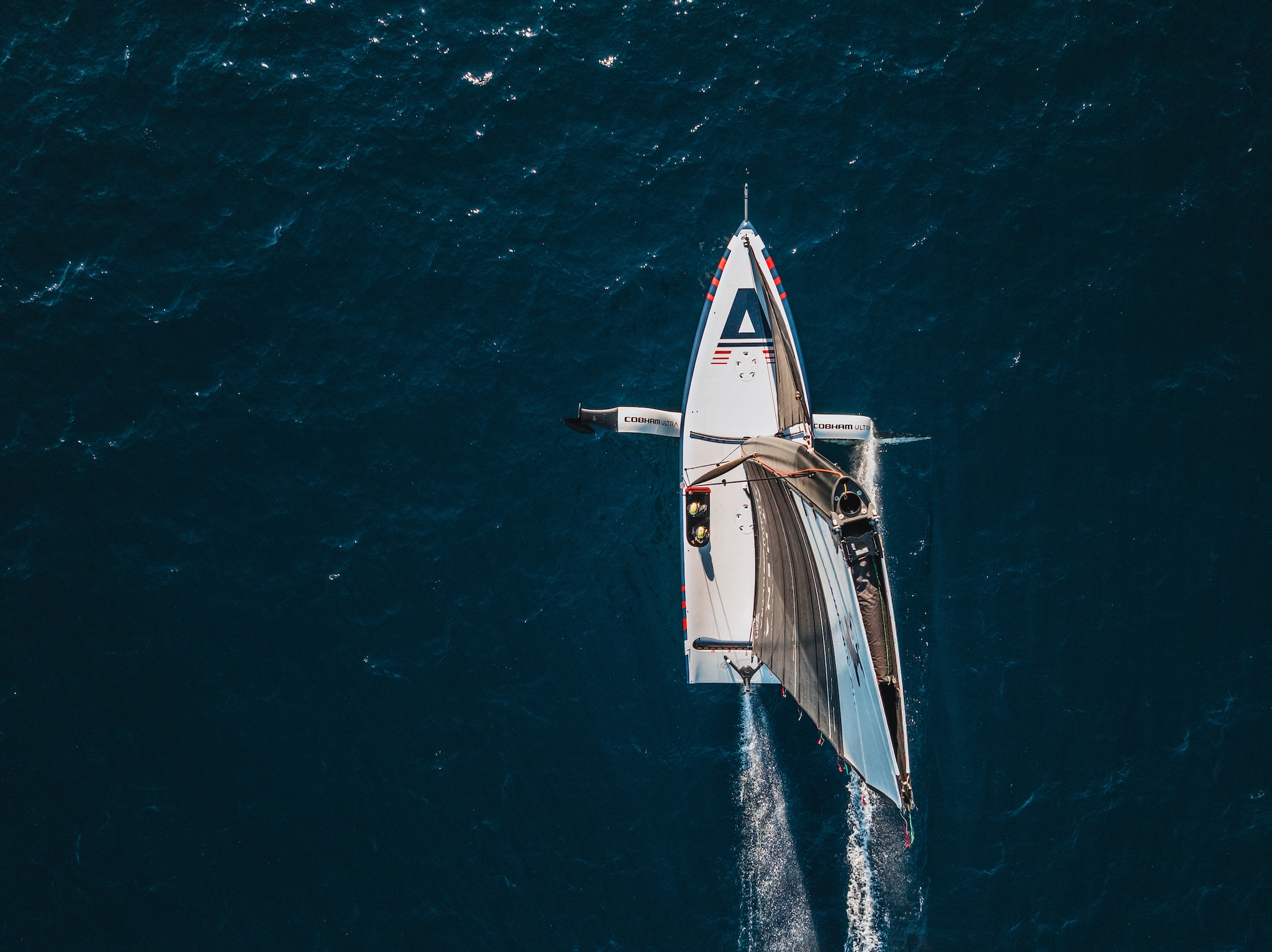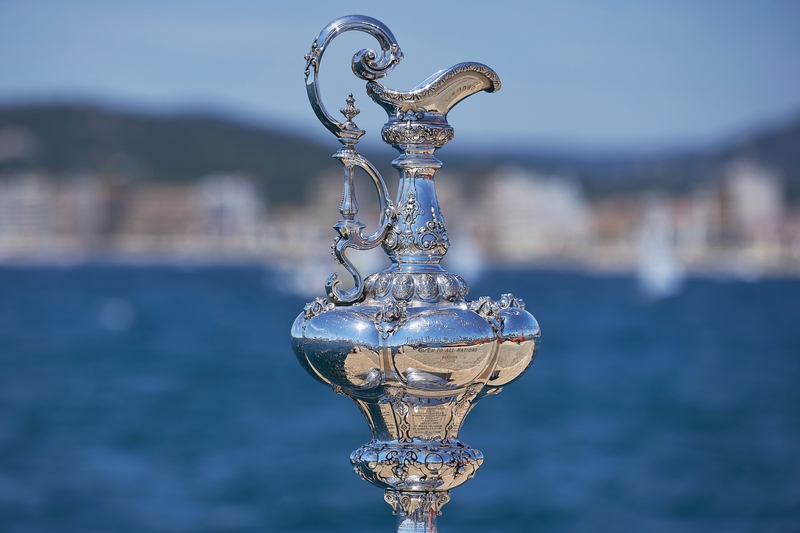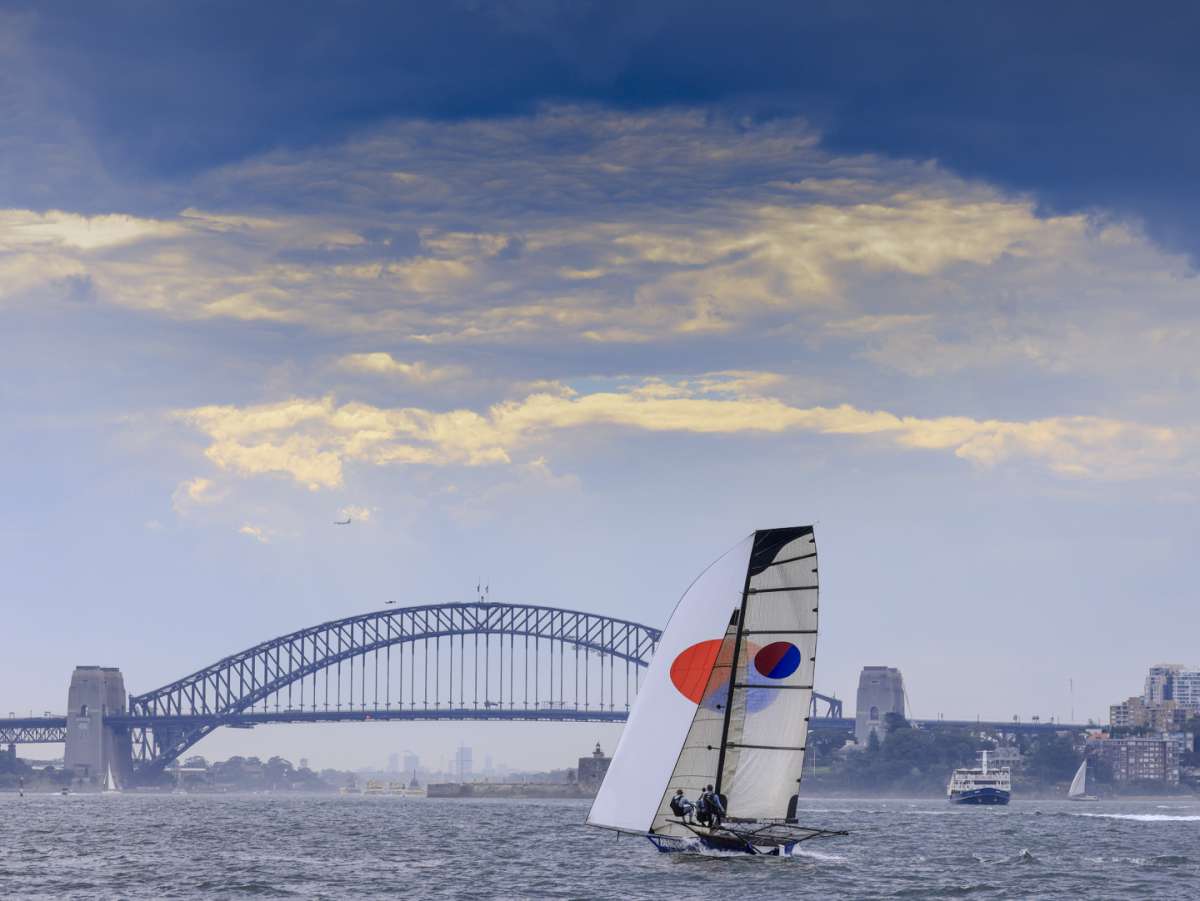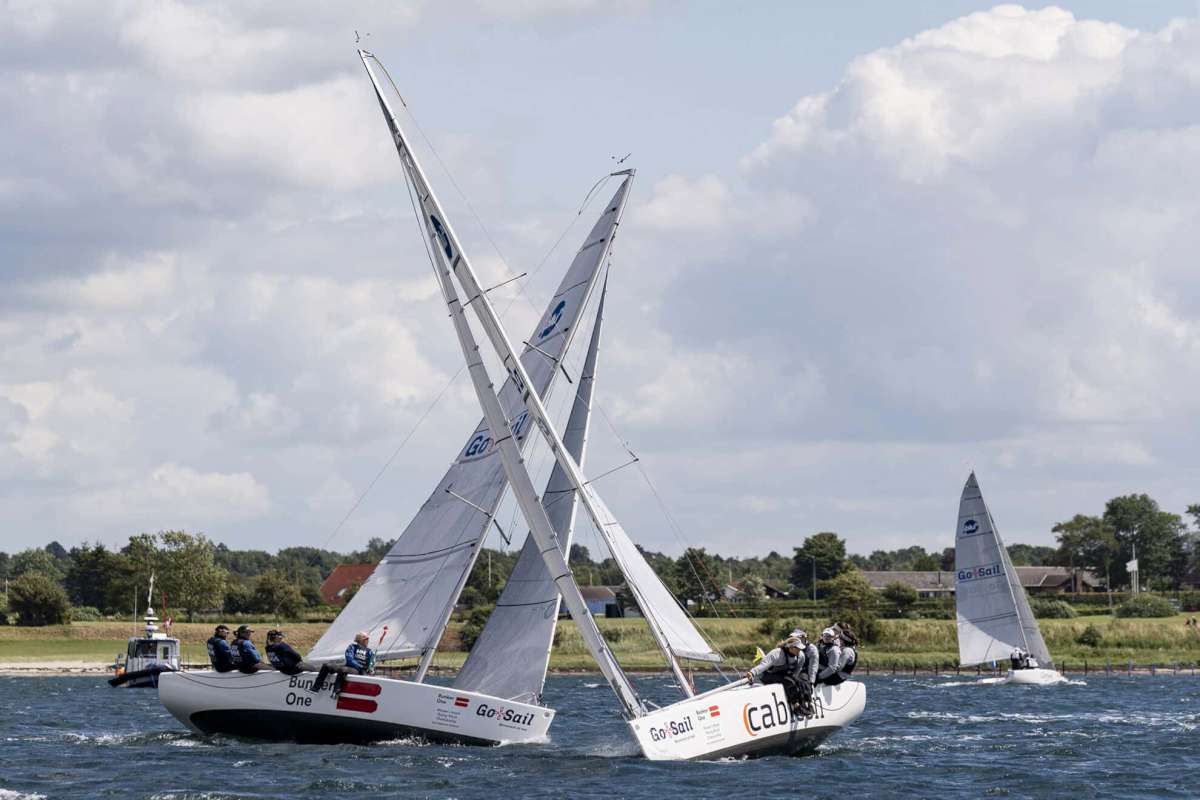The Panama Canal is a milestone for most circumnvigators, and so too was it for Elaine and Chris Kleiss, on their way home after purchasing a boat overseas.
This was it! This was the day! The various jobs mostly done and six months' supply of dry goods for the galley stowed, the weather system up and running. We had had a practice run. Now it was our turn. Hopefully we would not be allotted the infamous pilot “Chicken Man” or be forgotten.
Elaine had teased my tastebuds over the last few days, employing her skills to create mouth-watering dishes for the additional five crew.
John and Nicole of Gannet arrived and stowed their gear. John had been an international troubleshooter for Caterpillar diesel engines before retiring. He and Nicole are en-route to New Zealand, where they have a house. Their USD income would buy more in New Zealand, John explained.
Next, Canadians Finlay and Susan climbed on board. This was a big step for them, both recovering from serious injuries sustained when a deer jumped out at them, as they rode their motor bike in Canada. Finlay had been near death. Regular Panama cruisers, their cruising had been delayed this season to recover more of their strength. It would be needed on this journey.
The crew inspected the lines they would handle, the 10 plastic-wrapped car tyres and the half dozen regular fenders slung over the gunwales to protect topsides.
The harbour master called: “K-Sera II, K-Sera.Your pilot will boarding at 17.30. Please stand by on channel 12.”
Good crew
We had a good crew – great people, experienced boat handler – each having travelled thousands of sea miles. Their experience showed, their manner confident in dropping K-Sera II's mooring lines as I reversed out of the berth.
First stop, the Flats, the anchorage off the Panama Yacht Club marina, 45 minutes across the harbour. Anchor down, Elaine produced the first of the delicacies, a cake to mark Nicole's birthday the previous day. The singing over, we dropped the dinghy for my last quick car ride into downtown Colon to collect our port clearance Zarpe from agent Stanley, some additional petrol for the outboard, and fresh bread.
I said a quick goodbye to Geoff and Jose of Stravaig, heading off into the Caribbean. Stravaig, a trimaran, had battled Hurricane Omar's 85-knots winds, sailing for hours on the edge of one of its pontoons, as a rescue aircraft circled above them. The feat was the more remarkable because Geoff has only one leg. Their boat was so heeled Jose had to prop Jeff up with her body, acting as his second leg.
Then, a chat with Peter on Bagheera – Peter had arranged to transit the canal on the same day. Bagheera is an 11.3m catamaran and K-Sera II a 14.7m mono. We would be rafted up as we transited the locks. On our practice run through the canal as linehandlers aboard Minuit we had been rafted up to a French-crewed 16m catamaran. The transit had gone well enough, but had been more stressful than needed. Crew aboard the catamaran lapsed into French, canal pilots lapsed into Spanish, the rest of us into either Australian or US English. Voice communications were not always well understood
The lesson learned: to ensure our steering stations would be aligned for easy skipper-to-skipper communication. This meant rafting up on Bagheera's port side, the reverse to what pilots normally advise. Another lesson: linehandling crew needed to be aware of linehandlers on the other boat.
Then back to the pleasantries aboard K-Sera II as we awaited the pilot. Cockpit stories of prior canal transits flowed, including one where authorities scheduled a boat to cross, but then forgot to send a pilot. They had been forced to wait 24 hours before transiting.
Strict guidelines
To transit the canal, strict guidelines are in place. First, the “admeasurer” comes to measure length and beam of the boat. He checks length, thickness and suitability of the four lines, which will hold the boat in the centre of the locks, as each fills or empties. At low water the sheer lock walls are eight metres above water level. Poor control by linehandlers, bad or too short lines are likely to cause a boat to hit the lock walls, causing damage.
The boat's engine capabilities are assessed and noted. Information is provided, questions answered, directions given to provide the pilot with beverages and meals. Should these be unavailable or of poor quality, the pilot is entitled to have food and drink brought to the boat by a canal authority boat, the cost of the food plus delivery added to the transiting boat's fee.
Of the 64 small boat pilots, one was known to colleagues and in cockpit folklore as “Chicken Man”. Upon boarding his charge, his first question, “What's on the menu?” If not chicken, he complains and has his meal brought to the boat. Nobody wanted “Chicken Man” allocated to their boat.
Small boat pilots are referred to as advisors, but once aboard rank above the skipper in authority.
Where is our pilot?
The time: 1730, then 1800. No pilot. We would have our evening meal now, before entering the locks. The pilot eats his underway. We tucked into a great meal, our crew full of compliments on Elaine's culinary skills.
Darkness was falling quickly. We had some way to go before reaching Gatun Locks, the first three of six. Ships littered the harbour, their lights a confusing vista. Our prior experience had identified this confusion as an issue, so I had laid a course on our plotter.
1815: the dark shape of a canal authority boat approached Bagheera. In the gloom a figure leapt onto her deck. Bagheera had its pilot. Would K-Sera? The pilot boat disengaged and made way, not towards K-Sera II. Our hearts sank. Then it turned towards us. Alongside, a familiar figure leapt aboard.
Ricky had been a pilot aboard Minuit on our practice transit. His full-time job was that of engineer employed in the work of enlarging the canal. He had been more an enthusiastic tour guide than advisor. His enthusiasm for the canal and love of his part-time work as a pilot was infectious. A good people person, he made a point of conversing with each crew member at their various posts. His presence had enhanced our enjoyment of the new experience. Pleasantries exchanged, we marvelled at the chances of him being assigned to transit the canal with us. He said it was the first time he had gone through with the same people twice! “It's my pleasure to be aboard K-Sera,” he said with conviction.
Ricky checked our lines. We discussed the practicalities of rafting up to Bagheera's port side. He considered this, radioed in rapid Spanish to his colleague aboard Bagheera, nodded and said, “That's fine. OK, let's go!”
Anchor up
I positioned K-Sera II to follow my course, the myriad of lights slowly identifying themselves as ships at anchor or underway, and navigation aids.
As the waterway narrowed, only the channel markers and two ships directly ahead needed our attention. We slowed and hurried, matching our speed to the larger vessels. A short distance from the Gatun Locks Ricky motioned me to slow down saying, “Time to raft up.” Spanish arrangements made via Ricky's radio, Bagheera motored up. Both crews now faced their first test, rafting the two boats securely as if they were a single vessel, while underway at two knots. Though our linehandlers did not know the crew on Bagheera, there were no language barriers and the exercise was accomplished quickly and professionally.
Now I was to be tested. I would use my engine, Bagheera only her starboard engine, to make way and manoeuvre inside the lock. Our steering stations were well aligned, our communication good, our pilots very experienced, though this task was not in my résumé. We accomplished it well, maintaining correct direction and speed. Inside the lock, we synchronised our differing-sized engines into reverse to slow the boats. Thin lines were thrown down fore and aft from the lock walls eight metres above us. Each line carried heavy weight. The men on the wall were precise, our crew alert. Soon they had attached our heavy lines to the thin ones. The men on the wall walked with their thin lines along the lock wall as the two boats slowly made their way to their position behind a freighter and a tourist boat inside the 280m-long lock. At the direction of our advisors the men on the wall pulled up our heavy lines, placing them over bollards on the wall. Simultaneously we reversed the engines and came to a stop as the heavy lines took the strain.
Ricky and his colleague aboard Bagheera relaxed, satisfied that our crews had intelligence and boat skills.
Bubbling up
The huge gates slowly swung closed behind us. Hardly had they shut when fiercely bubbling water came up from fountains in the bottom of the lock. The water swirling this way and that, the lock slowly filled, our lines held, our crew hauling them evenly as we rose higher and higher. The swirling ceased as we neared the top. Now we could see over the top of the lock gates, and look down on the myriad of navigation and ships' lights of which minutes earlier we had been one.
The ship ahead moved forward as four locomotives along the locks wall towed her out of the lock and into the next one. The linehandlers on top of the wall dropped our lines; our crews pulled them aboard until only the thin line stretched to the lock wall. Our pilots motioned for us to move forward; again Peter and I were well synchronised, maintaining our central lock position as we moved into lock number two.
Now the process was repeated, the huge gates slowly shut. It was as if we were in a huge cavern, the water bubbling fiercely up from the bottom. Peter and I synchronised engine power to maintain a central position, our crew again hauling in their lines a little at a time, as they shortened to the rising water level. All was well. We repeated the process in Lock 3.
The gates of Lock 3 opened onto Lake Gatun; it was late, the night moonless. Our advisors suggested we remain rafted up for the short run to the night's mooring platform.
A beautiful sunny morning dawned the next day and, untied, we began the 20-mile cruise across picturesque Lake Gatun.
As we approached the locks, we again rafted up to Bagheera, both crews now relaxed with the promise of an easier work load on the descent. The procedure was the same: linehandlers threw their thin lines, ours caught them, tied the mooring lines to them, linehandlers walked along the wall until signalled to tie our lines to a bollard. Peter and I kept our engines synchronised to maintain speed and central lock position. Elaine served a solid lunch. First we descended Lock 1. Now a short run across a small lake to the final two locks..
Keep moving
Our advisors urged usto keep the boats moving to the final lock. The line handlers on the lock wall needed to run to match our speed as we headed in. The instruction to slow came just a fraction late, the signal to tie us to a bollard a little too soon. Tied off, we slewed to one side of the canal, K-Sera II just touching the lock wall. The current flow in the lock was unexpectedly strong, our crews tugging on lines to help straighten the boats. Skippers and advisors offered views on corrective measures, crew hands in danger of being hurt. Good seamanship and teamwork by all saved the day. The boats slowly crept back to central position, the lock began to drain, our boats descending, then the gates opened. There ahead, beyond a bridge, lay the Pacific Ocean, our ocean, the ocean that lapped Australia's shores.



